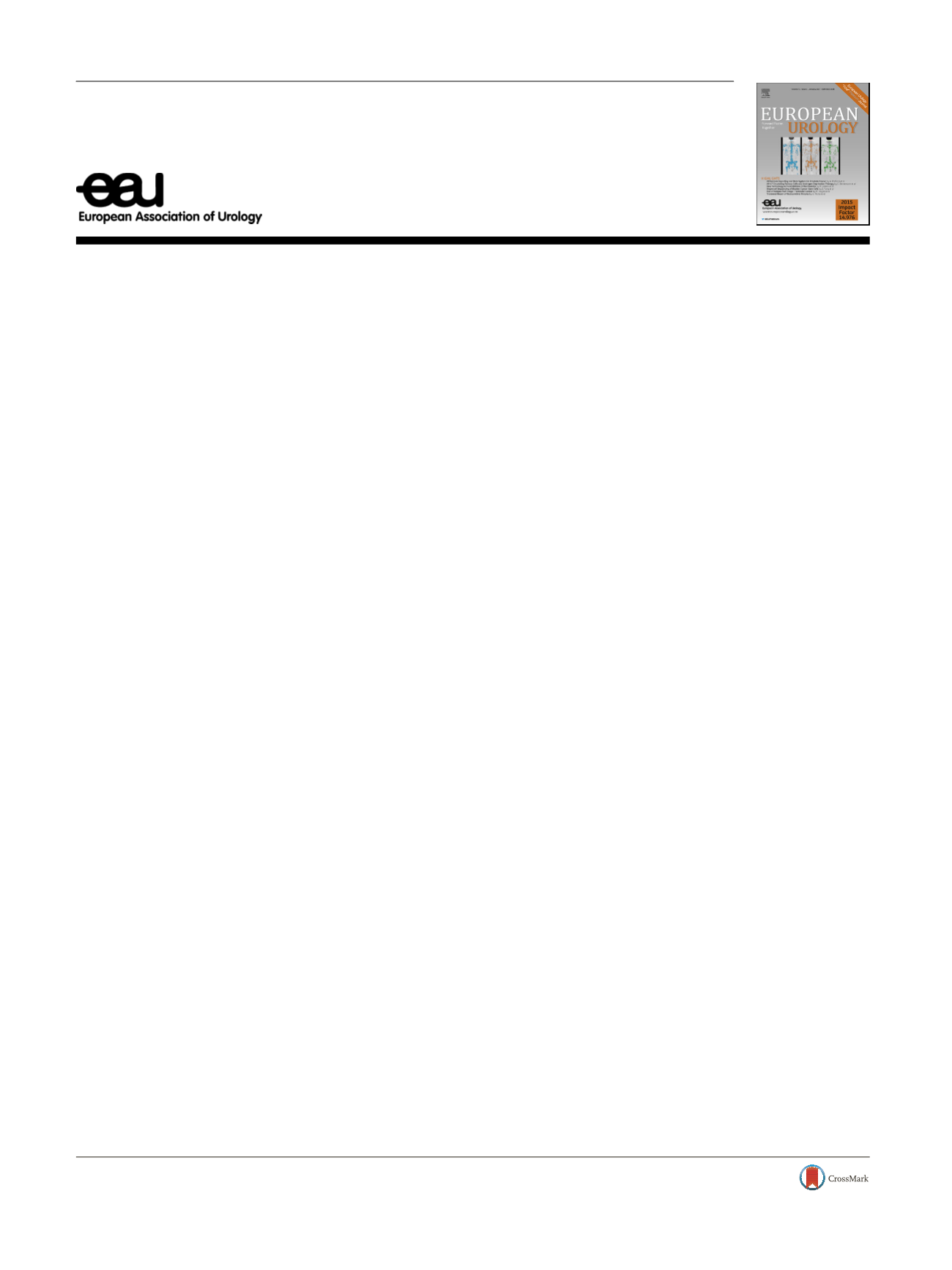

Platinum Priority – Editorial
Referring to the article published on pp. 1000–1011 of this issue
Is a Normal Testosterone Level Necessary for Erectile Function?
Taylor P. Kohn
a ,Ranjith Ramasamy
b , *a
Baylor College of Medicine, Houston, TX, USA;
b
Department of Urology, University of Miami Miller School of Medicine, Miami, FL, USA
Erectile dysfunction is defined as the inability to achieve or
maintain an erection that is satisfactory for sexual
performance
[1]. Vascular, neurological, psychological,
and hormonal factors are all involved in initiating and
maintaining an erection. Of these, the hormonal factor is the
easiest to assess by measuring morning testosterone levels.
The association between erectile dysfunction and testos-
terone levels is well documented in the literature. The
European Association of Urology (EAU) guidelines for the
diagnosis of erectile dysfunction recommend assessing total
testosterone levels
[2].
In this issue of
European Urology
, Corona et al
[3]report
findings from a meta-analysis of 14 randomized controlled
trials that measured the effect of testosterone therapy on
erectile function, as assessed by the International Index of
Erectile Function-Erectile Function Domain (IIEF-EFD). They
demonstrate that compared to placebo treatment, testoster-
one therapy provides only modest improvement in IIEF-EFD
(a mean difference of 2.31 points). When stratified by
baseline testosterone level, they found a greater improve-
ment in erectile function for menwith severe hypogonadism.
In primary studies with an inclusion criterion of testosterone
<
8 nM (231 ng/dl), the IIEF-EFD score increased by
2.95 points, whereas in primary studies with an inclusion
criterion of testosterone
<
12 nM (346 ng/dl), only a 1.47-
point increase in IIEF-EFD score was observed
[3] .This
greater improvement among men with severe hypogonad-
ism supports the theory that once the threshold of a ‘‘normal’’
testosterone level is achieved, additional testosterone
therapy does not further improve erectile function
[4] .The improvement in erectile function due to testoster-
one therapy may be enzymatically linked to phosphodies-
terase type 5 (PDE5). Several animal studies demonstrated
that testosterone regulates both nitric oxide and PDE5
levels, which are both essential for erectile function
[5] .Potentially, men with hypogonadism may have a
relative deficiency of the PDE5 enzyme, lowering the
efficacy of PDE5 inhibitors
[6]. In a randomized controlled
trial by Shabsigh et al
[7] ,dual treatment with sildenafil and
testosterone was more effective than monotherapy with
sildenafil for men with testosterone
<
400 ng/dl who had
previously failed a trial of a PDE5 inhibitor. While additional
research is still required to elucidate the relationship
between testosterone and PDE5, the evidence supporting
testosterone use in men with low testosterone and mild
erectile dysfunction is strong
[3,8].
The findings by Corona et al suggest that testosterone
therapy may only be useful in improving erectile function in
men with mild erectile dysfunction. If testosterone therapy
can obviate the need for PDE5 inhibitors or improve the
response to PDE5 inhibitors, then testosterone therapy has a
unique and beneficial role in the treatment of these
patients. We postulate that testosterone monotherapy
may not be as useful in men with moderate and severe
erectile dysfunction, as the etiology of more severe erectile
dysfunction may include pathologies such as advanced
diabetes, radical pelvic surgery, or severe neurological
damage. For these men, alternate erectile therapies may be
more effective.
Conflicts of interest:
The authors have nothing to disclose.
References
[1]
National Institutes of Health. Impotence. NIH Consens Statement 1992;10:1–33.[2]
Hatzimouratidis K, Amar E, Eardley I, et al. Guidelines on male sexual dysfunction: erectile dysfunction and premature ejacula- tion. Eur Urol 2010;57:804–14.
E U R O P E A N U R O L O G Y 7 2 ( 2 0 1 7 ) 1 0 1 2 – 1 0 1 3available at
www.scienced irect.comjournal homepage:
www.europeanurology.comDOI of original article:
http://dx.doi.org/10.1016/j.eururo.2017.03.032.
* Corresponding author. Department of Urology, University of Miami Miller School of Medicine, 1120 NW 14th Street, Miami, FL 33136, USA.
Tel. +1 305 2436090.
E-mail address:
ramasamy@miami.edu(R. Ramasamy).
http://dx.doi.org/10.1016/j.eururo.2017.04.0090302-2838/
#
2017 European Association of Urology. Published by Elsevier B.V. All rights reserved.
















